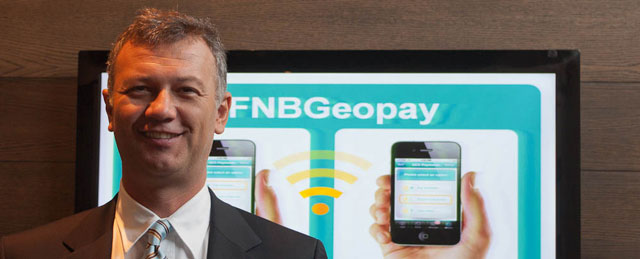
South Africa’s newest mobile broadband network, to be built by iBurst and Broadlink parent company Wireless Business Solutions (WBS), will be launched in early 2017, one of its backers, former First National Bank CEO Michael Jordaan, said on Monday.
Earlier on Monday, WBS finally set out its plans to build a national LTE-Advanced wireless broadband network following the acquisition in 2015 of the business by a company backed by Jordaan and former FirstRand CEO Paul Harris.
The network will use WBS’s existing spectrum assignments in the 1,8GHz and 2,6GHz bands. It said a “limited number” of LTE-A sites are already in operation and existing iBurst customers will be converted to the new network, with national roll-out commencing in the next few months.
In an interview with TechCentral, Jordaan said that WBS hopes to expand the network to 10 000 high sites around the country in the next five years. He also said it is “certainly not” the intention to sell the company to one of the big network operators. A transcript of the interview with Jordaan follows below.
TechCentral: You’ve announced this will be a multibillion-rand network investment. How much money is Multisource hoping to raise for this project and how will it go about this fundraising? Will it be a combination of debt and equity (if so, in what proportion)? How much are the existing shareholders willing/able to contribute to the network build? Have you already identified funding providers?
Michael Jordaan: We are a private/ unlisted company and are fortunate that we do not have to disclose our numbers to the public.
The expansion will be financed by a combination of equity and debt and the finance has been lined up already.
One of the advantages of LTE-Advanced and 5G technology is that it is significantly less capital intensive than 2G and 3G networks. Nor do we need to re-farm existing spectrum from voice to data.
TC: When will consumers be able to connect to WBS’s LTE-A network? In other words, when will commercial services be launched? Do you have a target date?
MJ: Rollout will be focused on geographical areas starting with Johannesburg and Cape Town and we will start offering services to customers in certain areas early in 2017.
TC: You mentioned there will be a new brand to take the product to market. Able to disclose what this will be? Has it been decided yet?
MJ: You will have to wait and see, sorry.
TC: What will happen to the iBurst network? When will it be shut down? How many iBurst customers will be affected? And what do they need to know about the transition? Will it cost them more? Will they have to pay for new CPEs or will this be subsidised by WBS?
MJ: There are still some 30 000 active iBurst customers, but as you know the technology is old and we will offer to upgrade all of them to LTE-A. Customers will certainly not be left in the lurch.
TC: Will LTE-A replace any of the last-mile links currently provided by Broadlink, such as microwave? What do Broadlink’s customers need to know about the new network?
MJ: This will be done on a case-by-case basis. There may well be instances where microwave is still a better solution for some Broadlink customers, but they will now have the option of LTE-A as well.
Broadlink runs a completely different network for the business-to-business world. LTE-A may well offer an additional option to a certain type of customer, but it will certainly not replace the existing radio network.
TC: Will you offer voice telephony and if so, will you conclude voice termination deals with the other providers? How important is it to offer voice?
MJ: Our view is that voice is fast becoming just another app. This could be via voice over IP, Skype, WhatsApp, FaceTime, etc. Our focus will be more focused on data solutions such as LTE routers or tablets than traditional phones.
However, once the network is rolled out, we will consider the landscape then and make a decision on traditional voice services via a roaming agreement.
TC: Will the LTE-A network be pitched as a fixed-wireless solution, or will you also target mobile users? If the latter, do you intend negotiating a roaming agreement with another provider for areas where you don’t have coverage (or need access to legacy voice networks)?
MJ: Our initial focus will be fixed-wireless as we roll out in each area. We hope to get to 10 000 sites over five years. In time, we may consider a roaming agreement.
TC: You say LTE-A is comparable to fibre, but wireless obviously has bandwidth limitations by its very nature. Will you be able to offer uncapped services at a reasonable monthly cost?
MJ: That’s true, but fibre also has certain limitations (digging up streets, pavements and gardens, plus the cost and waiting time). Not all users need the full capacity that fibre brings. So the two are likely to work in tandem in future, with mobility at a premium.
Both technologies are excellent and both have there sweet spots and limitations. You also can’t attach fibre to your phone, for example. As to product feature and pricing, you will have to wait and see.
TC: Are you building this network to sell it to one of the bigger operators?
MJ: Certainly not. We are very excited about building a superfast mobile data network and supporting all the new functionality that 4.5G and ultimately 5G will bring, such as Internet of things, smart cars and smart houses. This is a long-term game for us. — © 2016 NewsCentral Media




